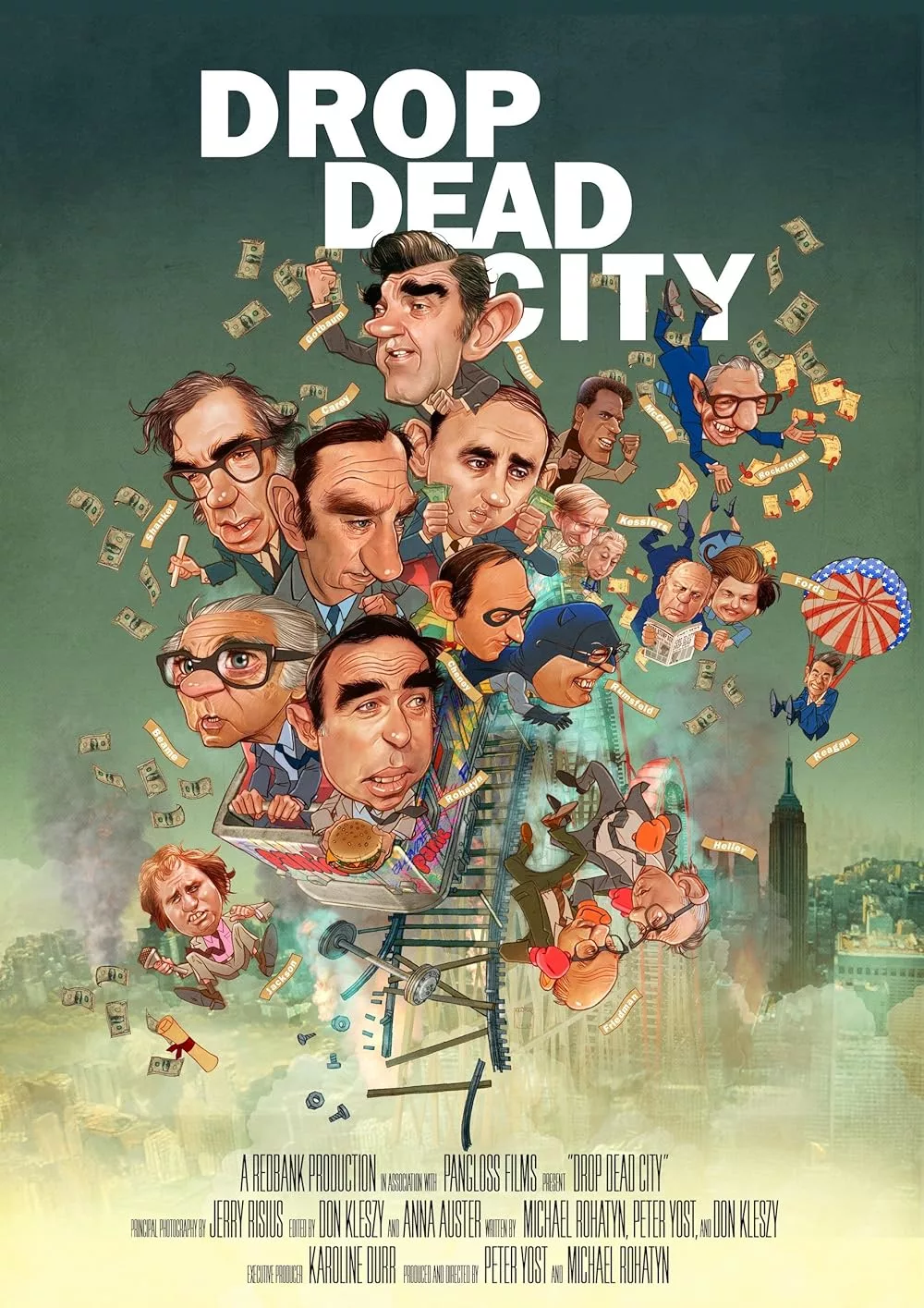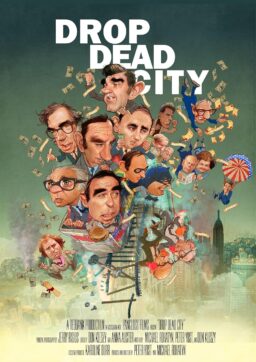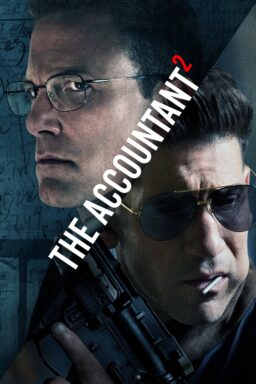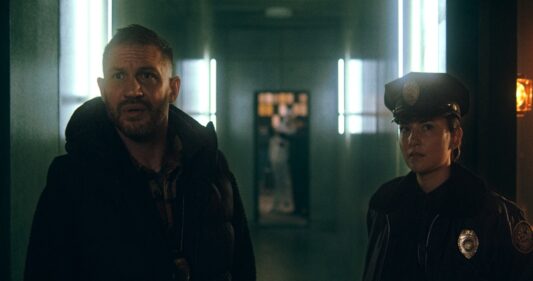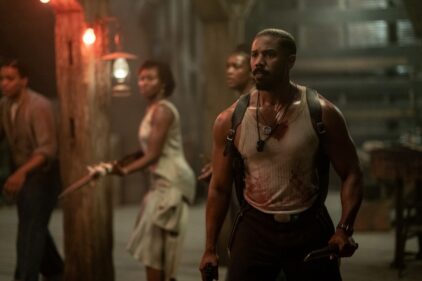In 1975, New York City was poised on the precipice of bankruptcy. Thanks to years of overspending, white flight, financial shenanigans, and willful ignorance, the city came within hours of defaulting on the loans that kept their services solvent, and in the process, nearly destroyed itself; city workers (including police, fire, and sanitation) were laid off by the thousands, buildings burned, subway fares were raised, garbage piled up on the streets. It was the darkest moment of a dark era for the modern metropolis, and it is a story told with skill, precision, and detail by the new documentary Drop Dead City. It’s a fine film, albeit one that nearly loses its credibility due to an unfortunate instance of undisclosed bias.
More on that presently. The story of New York’s fiscal crisis is dense and complicated, one that is typically told in bulky deep-dive books (such as Jonathan Mahler’s Ladies and Gentlemen, The Bronx is Burning, Vincent J. Cannato’s The Ungovernable City, and Kim Phillips-Fein’s Pulitzer finalist Fear City), and perhaps the picture’s most impressive achievement is that it manages to break down, with genuine clarity, the dizzyingly complicated system of municipal bonds from bidding banks that kept the city solvent. The filmmakers also convey, crisply and succinctly, what exactly made the city so expensive to maintain, all rooted in the progressive spirit of the time: free city college education, free (or inexpensive) family health and child care, affordable transportation, and a well-compensated public sector (via the labor unions) that created a robust middle and working class. “We were doing our best to do the right thing,” explains Judah Gribetz, counsel to the governor, “and it imploded on us.”
Standing at the center of that implosion was Mayor Abe Beame, who was inaugurated in January 1974 and discovered (or, more likely, realized, as he had been comptroller for previous mayor John Lindsay) that the city’s staggering debt was even greater than he’d been told, to the tune of $4 billion. The reasons were multifold: creative accounting, the loss of tax revenues due to white flight, and the easy boogeyman of the “welfare state.” The simple explanation is “The city is spending more, but taking in less.” Still, it wasn’t that simple, and the filmmakers manage to avoid pointing fingers, instead attempting to understand all the factors at play. It was a perfect storm of bluffing, wishful thinking, and false promises, and Drop Dead City builds urgency and amps up the significant drama of the story, with the anger of the city’s citizens and employees swirling as the city inches closer and closer to a financial cliff.
The filmmaking isn’t exactly groundbreaking, but it doesn’t need to be; the archival footage is splendid, blending contemporary newscasts, documentary footage, and interviews with commentary from reporters, historians, politicians, and artists. The images are still arresting, of people picketing at firehouses, traffic backed up from protests, garbage on fire in the streets, and buildings on fire in the Bronx. The analysis is mostly sturdy, meticulously detailing how they arrived at their conclusions and how few options were available. These are existential questions of good governance, of what responsibilities a city has to the people who live and work there—the essential, perhaps existential question of living in a capitalist democracy. And lest you believe that this is mere history, note the suddenly timely footage of then-presidential hopeful Ronald Reagan shooting off his mouth about how everything would be fine if we could just reduce the size and scope of the federal government. How’s that working out?
Eventually, the city had to take the drastic step of turning over the entirety of the city’s financial decision-making apparatus to an unelected outside group, the Municipal Assistance Corporation, led by an investment banker named Felix Rohatyn. That group, dubbed MAC, has a tricky legacy — its wheeling and dealing, its proposals and compromises, ultimately brought the city back from the brink. However, there was considerable, and understandable, resistance to the idea of the city’s financial decisions being dictated by an unelected group of upper-class businesspeople, and the long-term effects of their decisions and decrees remain controversial.
Watching Drop Dead City, as someone who’s researched this period at some length (obligatory plug), something seemed off about its portraiture of Rohatyn and his group; the 1981 documentary Tighten Your Belt, Bite the Bullet, for example, presented a much more critical portrait of MAC and its plans, using as a counterpoint the parallel financial woes of Cleveland, Ohio, which came out of its own economic crisis while refusing to turn itself over to banking interests. Well, ya know, it’s a different interpretation, I shrugged, and forgot about it—until, while preparing to write this review, I pulled the picture up on IMDb and checked the names of its directors, which I hadn’t clocked on my initial viewing. It was directed by Peter Yost and… Michael Rohatyn. No, it’s not that common a name. The film is co-directed by Felix Rohatyn’s son.
Is he free to make a film about his father’s work? Certainly. Should it be more clearly framed as such? Absolutely. This was a sticky, tricky moment in the history of New York City, and the legacy of Felix Rohatyn and MAC are anything but settled; the after-effects of their elimination and reduction of city social services are still felt in a landscape where poverty runs rampant and the wealth gap is wider than it’s ever been. And to disguise a valentine to one’s father as a straightforward historical account is, at the very minimum, deeply dishonest.
Drop Dead City marshals a tremendous amount of information and footage, moving at a swift clip with the help of well-chosen interview snippets and deftly cut montages. Its heart seems to be in the right place, particularly in the summarizing testimony from several interview subjects on what New York was, what it represented, and what it meant to them personally. However, the co-director’s undisclosed proximity to a key subject makes the entire enterprise feel like a public relations job, and one that leaves us wondering what was tilted in his father’s favor.


